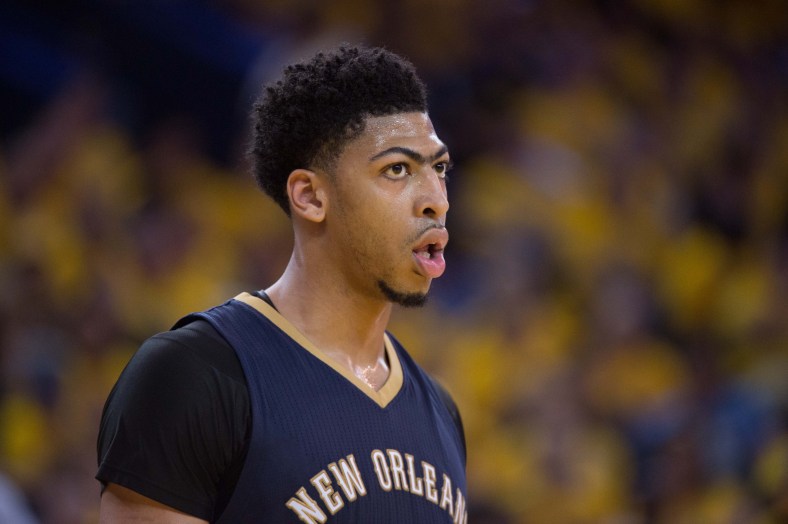
Instead of cramming players into a specific position for simplicity’s sale, it’s better to identify certain power forwards and centers as what they actually are: both.
The best NBA combo bigs are typically the result of small-ball lineups becoming commonplace around the league. Some power forwards simply don’t play an overwhelming majority of their minutes at the 4. But don’t worry, there’s a ranking for that.
7. Tristan Thompson, Cleveland Cavaliers?
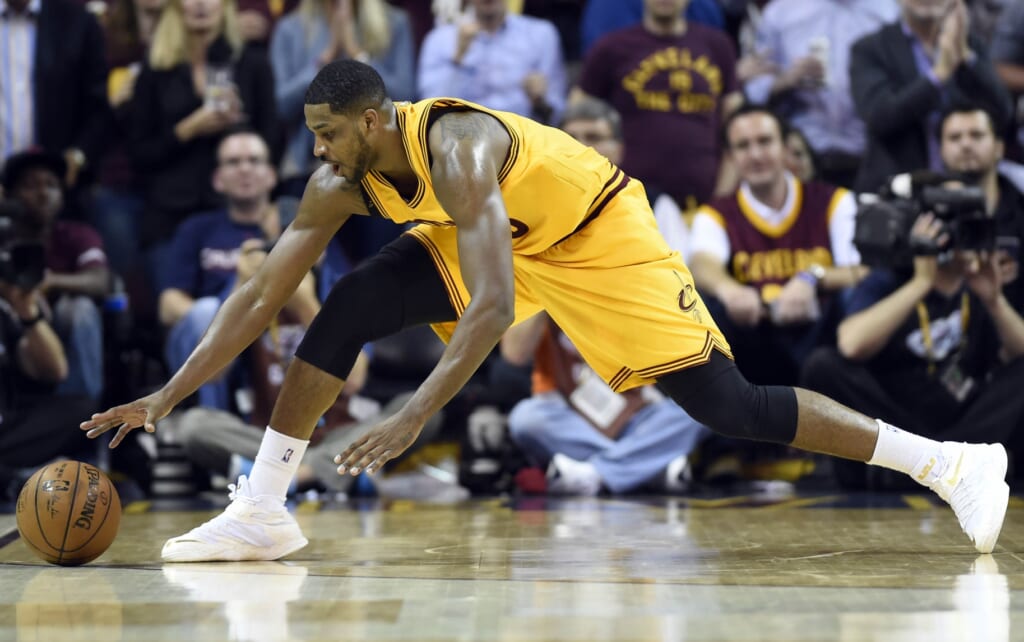
It’s been a weird offseason for Tristan Thompson. The restricted free agent attempted to capitalize on a strong performance in the playoffs and officially refused to sign the qualifying offer from Cleveland to pursue offer sheets elsewhere that would force his current team to match. Yet, he has no contract.
No matter where Thompson ultimately plays, however, that team—almost assuredly the Cavaliers—will have a reliable rebounder. Last season, he pulled down 8.0 boards per game, adding 8.5 points on a career-best 54.7 field-goal percentage.
Thompson’s biggest weakness is his defense, which Cleveland perfectly addressed and hid by acquiring Timofey Mozgov to protect the rim. As long as Thompson doesn’t need to carry a defense, he’s a useful piece who keeps offensive possessions alive and eliminates second-chance opportunities for opponents.
6. Terrence Jones, Houston Rockets
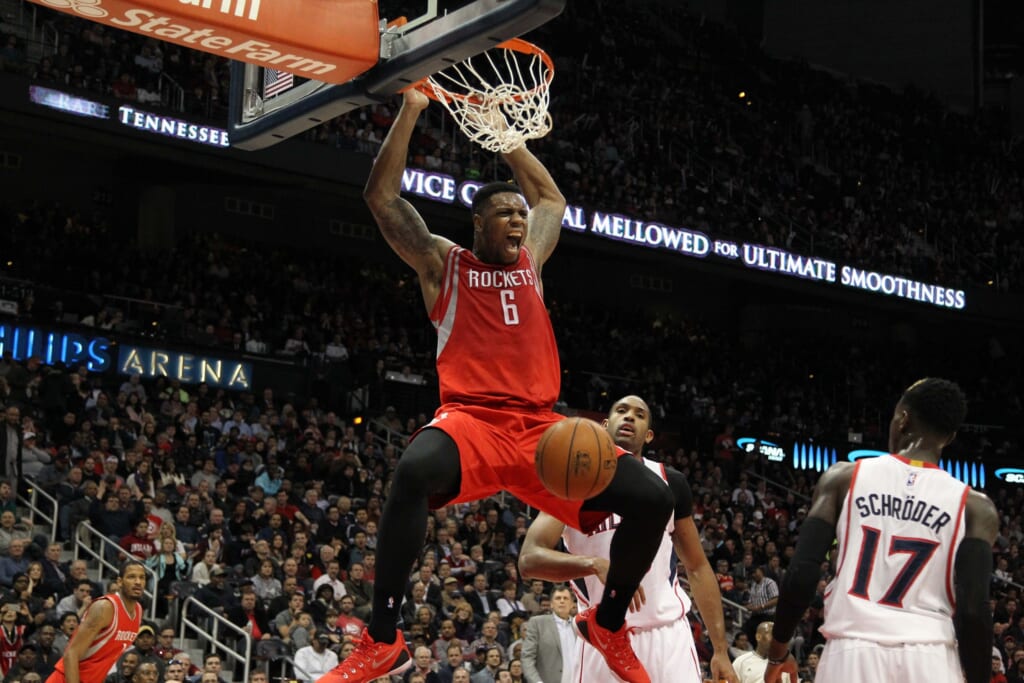
A variety of injuries cut Terrence Jones’ 2014-15 campaign short, but the left-hander performed well when healthy. He registered 11.7 points, 6.7 rebounds and 1.8 blocks per outing, shooting 35.1 percent from three-point range and 52.8 overall.
When Jones was in a lineup with the starting backcourt as well as Donatas Motiejunas—another combo big—Houston struggled to make a sizable dent on the scoreboard. Per NBA.com, the lineup of Patrick Beverley, James Harden, Trevor Ariza, Motiejunas and Jones posted a 106.8 offensive rating and 105.9 defensive clip.
Playing Jones alongside Dwight Howard was a different story. Jones could jump out to the perimeter and provide spacing, opponents were forced to respect Howard’s interior presence and Harden could attack the basket at will. That five-man unit racked up a 117.1 offensive mark and 101.8 defensive rating.
If the Rockets continue to place the 23-year-old in a non-featured role, as long as Jones is healthy, there’s little reason to think he won’t succeed.
5. Greg Monroe, Milwaukee Bucks
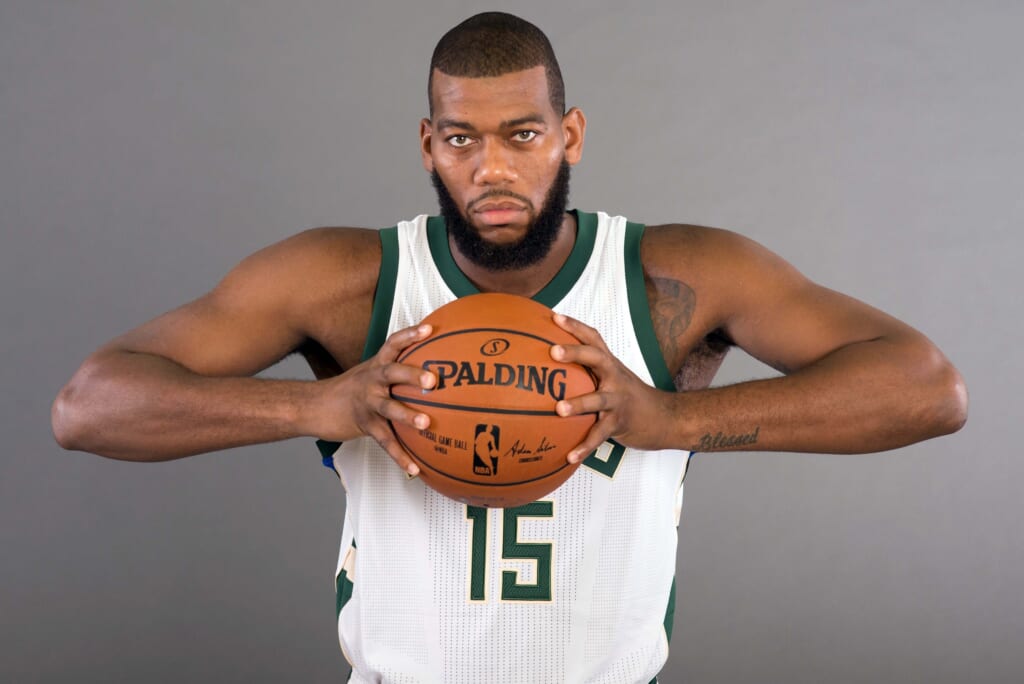
The Milwaukee Bucks desperately needed a low-post threat to complement Jabari Parker, and they likely found their man in Greg Monroe. A 2010 first-round pick of the Pistons, he recorded 15.6 points, 9.7 rebounds and 2.5 assists over the last four seasons.
Monroe isn’t much of a defender, but Milwaukee isn’t hurting in that department because of John Henson, Giannis Antetokounmpo and Michael Carter-Williams. However, that trio isn’t consistent on the scoring end, and Monroe should fill that void relatively seamlessly.
In 2014-15, according to Basketball-Reference, Monroe only attempted 65 of his 853 shots outside of 10 feet. Monroe was the necessary piece that gave Milwaukee a balanced inside-outside offense to complement a strong defensive unit.
4. Tim Duncan, San Antonio Spurs
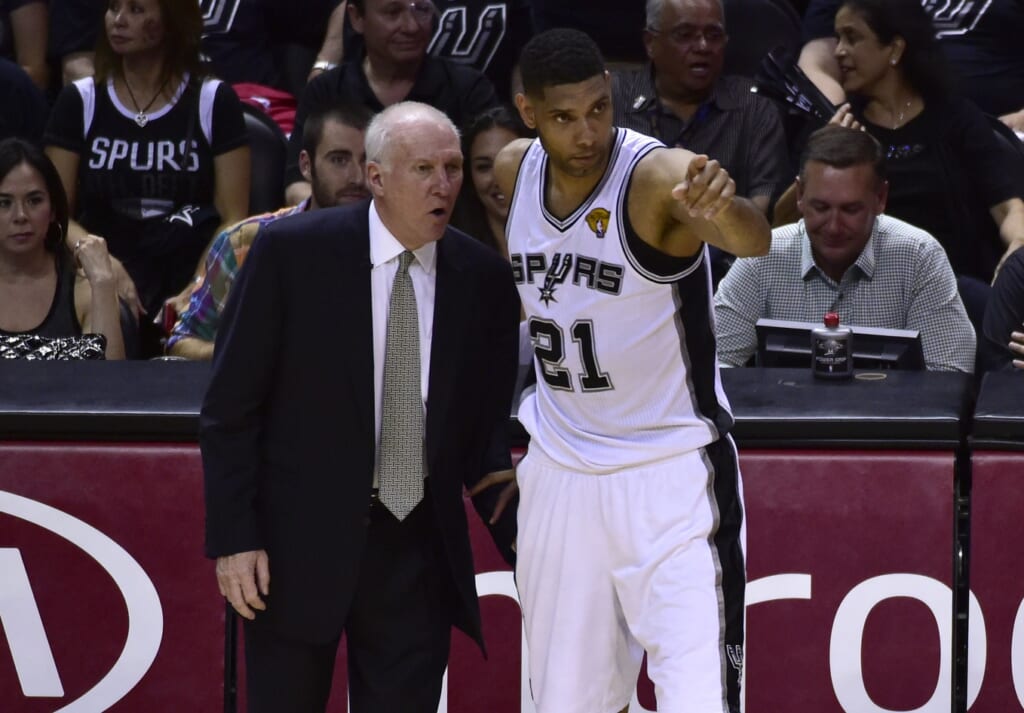
The only accepted explanation for Tim Duncan’s sustained success is he’s a robot. Since neither the truth nor falsity of that notion cannot be proven, we’ll give the future Hall of Famer—who tallied the sixth-most blocks in the NBA last year—the benefit of the doubt.
Duncan was easily the second-best combo big of the 2014-15 season, mostly because injuries to the Spurs roster forced the veteran into the lineup almost every night. He appeared in San Antonio’s final 61 games—which last happened in 2007-08—and even amassed 17.9 points, 11.1 boards and 3.3 assists during the playoffs.
LaMarcus Aldridge signed with San Antonio during the offseason, so the 39-year-old’s days as a combo big—let alone his career—are numbered. Nevertheless, the all-around efficiency Duncan offers on both ends of the floor is only matched by a few NBA players.
3. Pau Gasol, Chicago Bulls
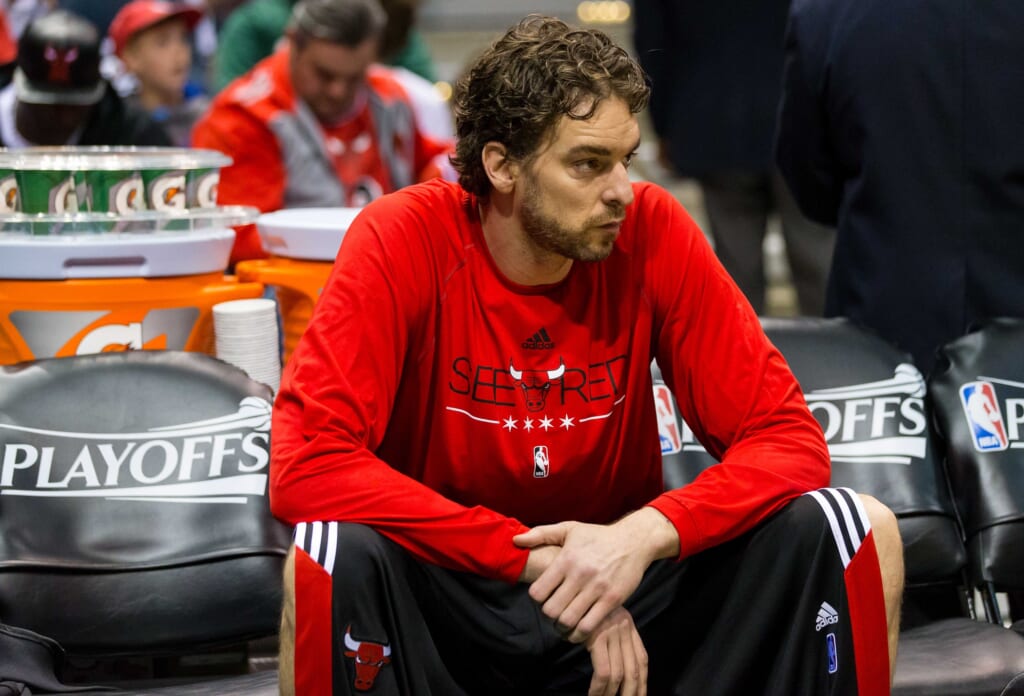
Perhaps former Bulls coach Tom Thibodeau didn’t understand the concept of saving a player for the postseason, because Pau Gasol must’ve been exhausted once mid-April arrived.
He played at least 36 minutes (three full quarters) of action 26 times. Per Basketball-Reference, Kobe Bryant and Matt Barnes (12 time each) were the next-closest 34-or-older players who saw 36-plus. Regardless of the wear and tear, Gasol netted 18.5 points, snatched 11.8 rebounds and knocked down 47.5 percent of his shots from 16 feet and farther.
According to Cody Westerlund of 670 The Score, Gasol hopes his minutes are “more shared” in 2015-16. With an easier workload, few issues could keep Gasol from retaining his place a top-tier combo big.
2. Chris Bosh, Miami Heat
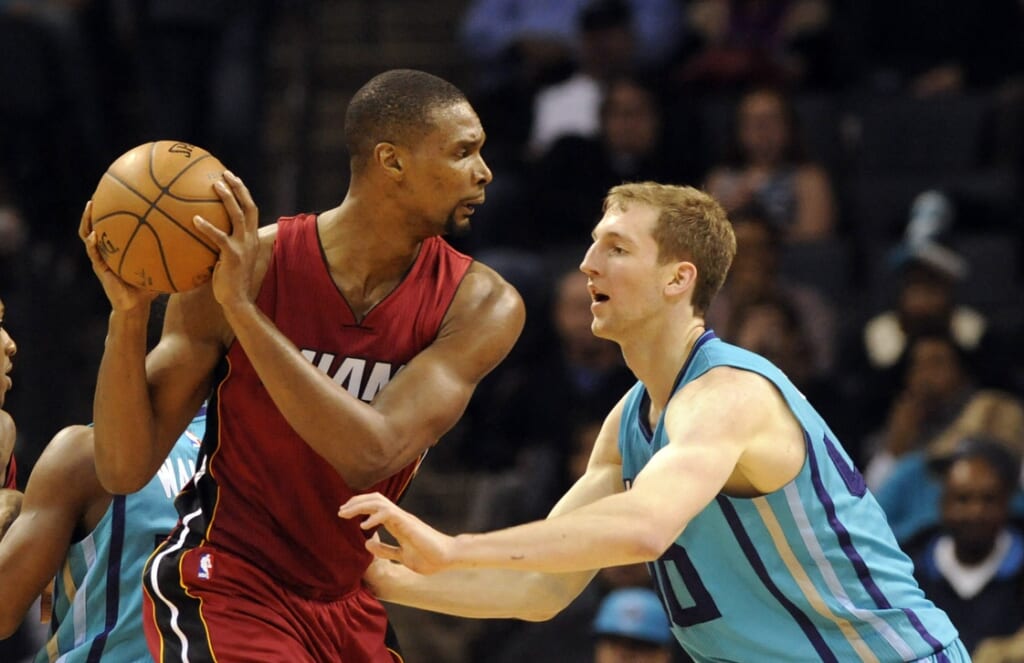
When Chris Bosh played for the Toronto Raptors, he was a superstar. When Bosh was the third part of the Miami Heat’s Big Three, he was an outstanding role player. Once LeBron James returned home to Cleveland, Bosh reclaimed superstar status.
The left-hander averaged better than 20 points per game for the first time since 2009-10, finishing with 21.1 points while shooting 37.5 percent from long distance. However, blood clots in his lung ended Bosh’s season at the All-Star break—and on a bigger note, caused a legitimate scare for his life.
Ethan Skolnick of the Miami Herald notes Bosh recently said “I’m good to go,” Hopefully Bosh avoids all health problems in 2015-16, because he’s arguably the best stretch 4 in the entire NBA.
1. Anthony Davis, New Orleans Pelicans
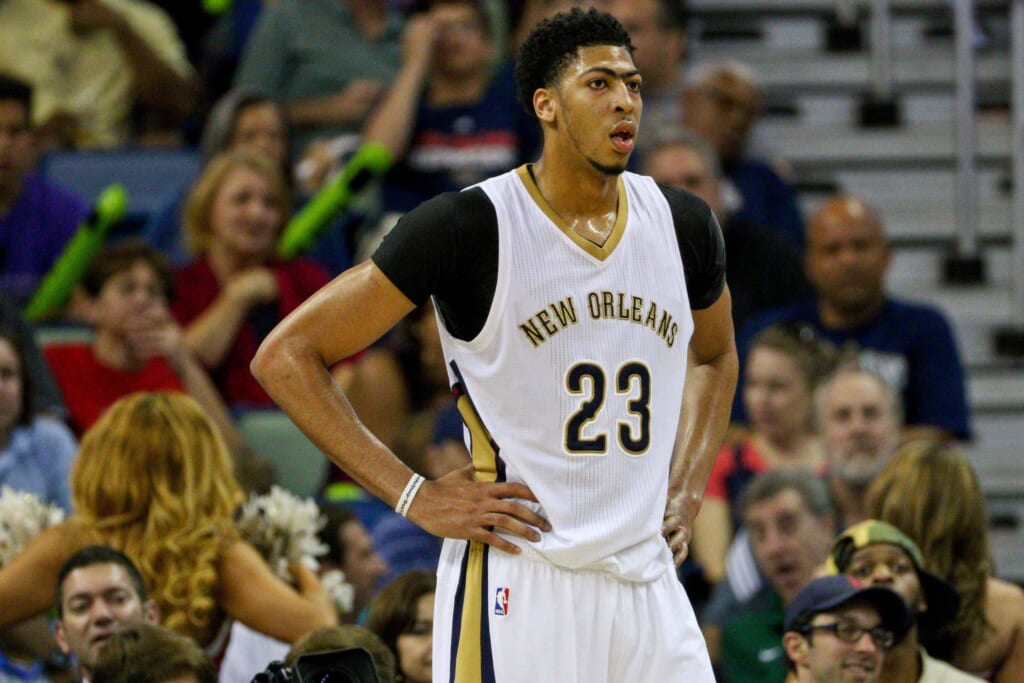
If there were any doubts as to which player would claim the title of “NBA’s best player” after LeBron retires, Anthony Davis eliminated those thoughts last year.
The Brow registered 24.4 points, 10.2 rebounds, 2.9 blocks, 2.2 assists and 1.5 steals per game, notched an NBA-leading 30.8 player efficiency rating, a 122.1 offensive rating (9th overall) and a 100.2 defensive clip (12th). Plus, despite a 27.8 usage rate, Davis posted a stunning 6.3 turnover percentage—the third-best in the league.
He carried the Pelicans to the playoffs, where they provided the Golden State Warriors one of the most competitive series that ended in a sweep. That may sound funny, but it’s true.
Davis is only 22 years old, which should be terrifying. He’s an elite scorer and shot-blocker, a dependable rebounder and solid off-ball defender. Davis is working on adding a three-point shot to his arsenal, and first-year New Orleans coach Alvin Gentry—he of the “7 Seconds or Less” offense with the 2008-09 Phoenix Suns—will only encourage Davis’ long-range future.
Zero legitimate counter-arguments exist; Davis is the best combo big in the NBA, and that’s not changing anytime soon.